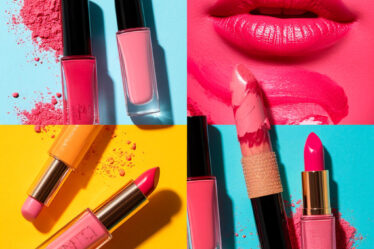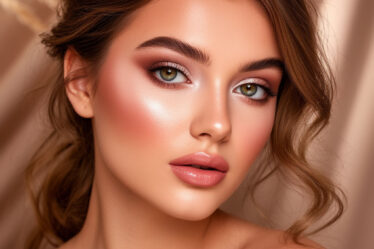
Finding a product that hydrates, protects, and adds just the right amount of coverage feels like hitting the skincare jackpot. BB or CC cream can deliver all that in one tube. But there’s a catch: choosing the wrong one can leave your skin looking off, or even irritated. BB and CC creams may seem similar at a glance, but their differences make a huge impact on how your makeup turns out. The key is understanding what each one really does and how to use them to your advantage.
BB or CC? We prepared a Beauty Club mini-brochure that explains the difference, maps skin types & concerns to the right pick, and shows layering with SPF without pilling. You’ll find a PDF download at the end of this article to save and print.
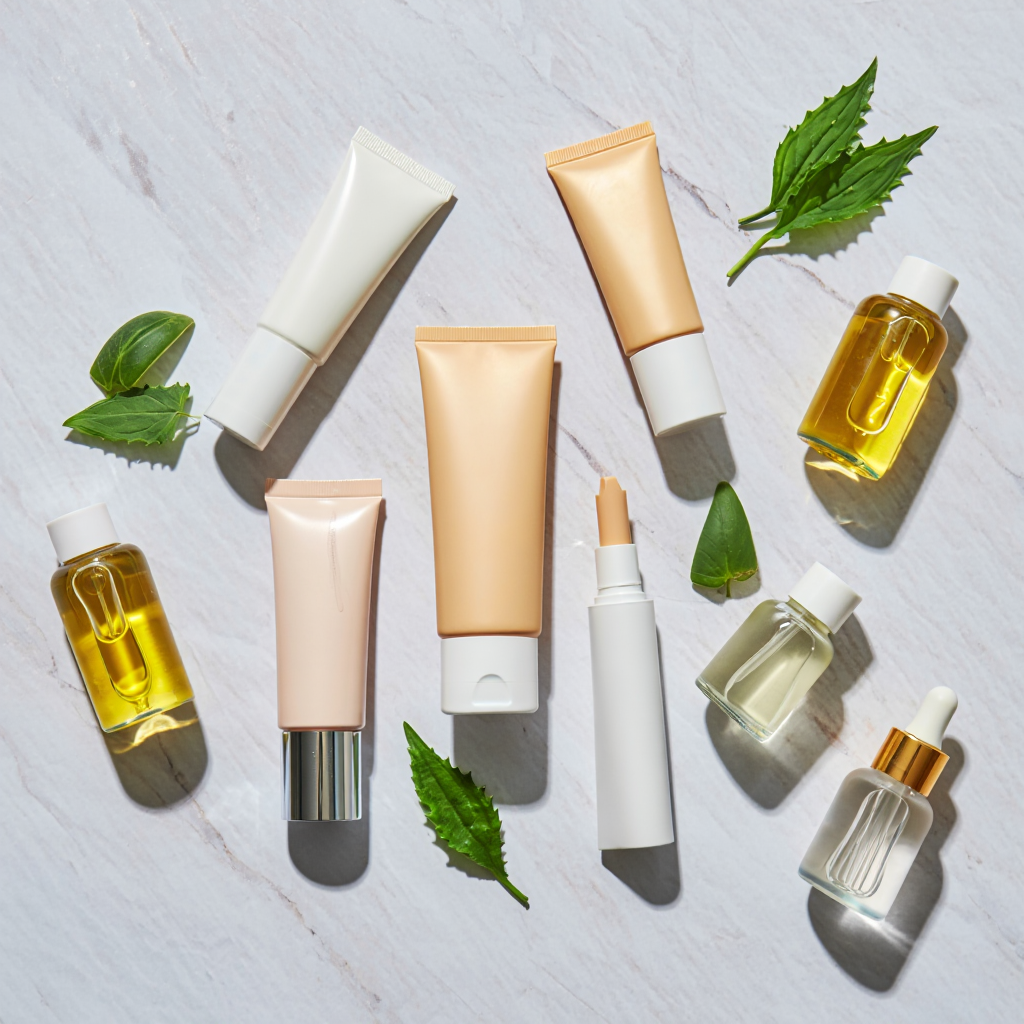
BB and CC: What They Really Do
Ever wished for a product that moisturizes, evens tone, and protects from the sun? BB or CC cream might be just that magic fix. These multitasking champs aren’t just hype. But picking the wrong one can leave your skin looking worse instead of better.
A lot of people still confuse them. Some use CC cream expecting full foundation coverage. Others hope a BB cream can fix deep redness or pigmentation. What they get is patchy, uneven makeup or a heavy mask look.
So, how do you stop wasting money on the wrong stuff and finally find that perfect hybrid? It starts with knowing what each one really does.
BB Cream: The Moisturizing All-Rounder
BB cream is perfect if you want a break from heavy foundations that can feel cakey or clog pores. It offers low-effort, healthy-looking makeup that gives your skin a natural glow without feeling heavy. This product combines skincare benefits with a touch of tint, making your routine simpler. Many appreciate how it hydrates while providing subtle coverage, ideal for daily use. Its formula is designed to enhance your natural skin rather than mask it.
After choosing a BB cream, focus on hydration before applying. The rich formula pairs best with well-moisturized skin, helping the cream spread smoothly and preventing caking.
These ingredients not only protect the skin but also boost overall comfort throughout the day. They help your complexion appear smoother and more even, especially in dry or windy environments where moisture tends to escape quickly.
CC Cream: The Color Correction Pro
CC cream works well if you want a natural look that doesn’t hide your skin’s texture or make it feel thick. It gives a gentle glow with minimal product, so your skin breathes freely while still looking even-toned. This cream provides a fix for uneven tone without buildup or heaviness, perfect for those who prefer light makeup. Its color-correcting pigments work subtly, allowing your skin’s true beauty to shine through. You can rely on it to balance out redness or dullness without a heavy finish.
While BB creams offer a bit more coverage and skincare benefits, CC creams really shine when it comes to fine-tuning your skin tone. Their correcting pigments work behind the scenes, helping your skin look bright and even without piling on product. This makes them a great choice for layering under powder or using alone when you want that “no-makeup” look. And since they’re lighter, they’re less likely to clog pores or crease throughout the day.
To make the most of CC creams, always apply them in natural light to properly gauge how the pigments interact with your skin tone. This helps avoid applying too much and keeps the look seamless.
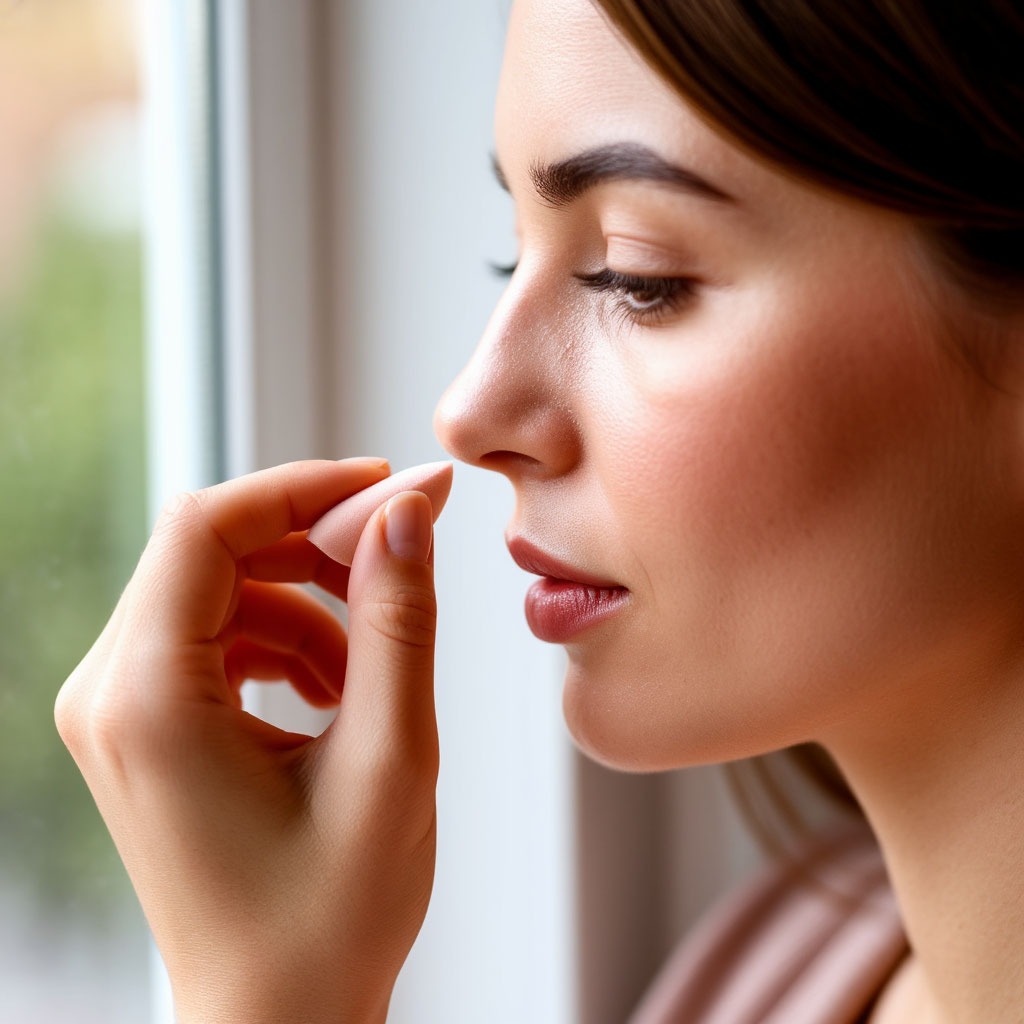
How They Work: A Closer Look
Both BB and CC creams affect the skin differently. That explains why they give such different results.
BB Cream: How It Protects and Hydrates
BB creams create a smart barrier using ingredients that lock in moisture and reflect light. Key features:
- Sodium hyaluronate forms a water-holding shield on the surface.
- Ceramides create a lipid layer to block moisture loss.
- Light-scattering particles soften texture visually.
These ingredients not only protect the skin but also boost overall comfort throughout the day. They help your complexion appear smoother and more even, especially in dry or windy environments where moisture tends to escape quickly.
CC Cream: The Science of Color Correction
CC creams rely on fine-tuned pigments and reflectors:
- Iron oxide filters absorb red tones from veins.
- Titanium dioxide bounces off yellow hues and blocks UV rays.
- Light-reactive particles add a soft bluish glow that masks unevenness.
These elements do more than just even tone — they interact with how light hits your skin throughout the day. That means your face can look smoother and more balanced even in different lighting. For best results, blend CC cream using gentle patting motions rather than rubbing. This helps pigments sit evenly without streaks or patchiness, especially around areas with redness or texture.
Wear and Tear: How Long Do They Last?
BB creams may build up or crack over time, especially on oily skin. That’s because of wax-based ingredients that harden through the day. CC creams, on the other hand, stay smooth longer thanks to better pigment dispersion. Tests show they stick to the skin better by around 25%.
Reactions and Skin Types
BB creams soothe dry, barrier-damaged skin with their softening ingredients. CC creams help reduce redness and visible vessels through light-based correction. Both maintain a safe pH around 5, which keeps irritation low.
After learning how these products interact with the skin, it becomes easier to pick what’s best for you. Try swatching both on the same area and wear them for a few hours. Pay attention to how they sit and feel. That simple trial can help you choose with confidence.
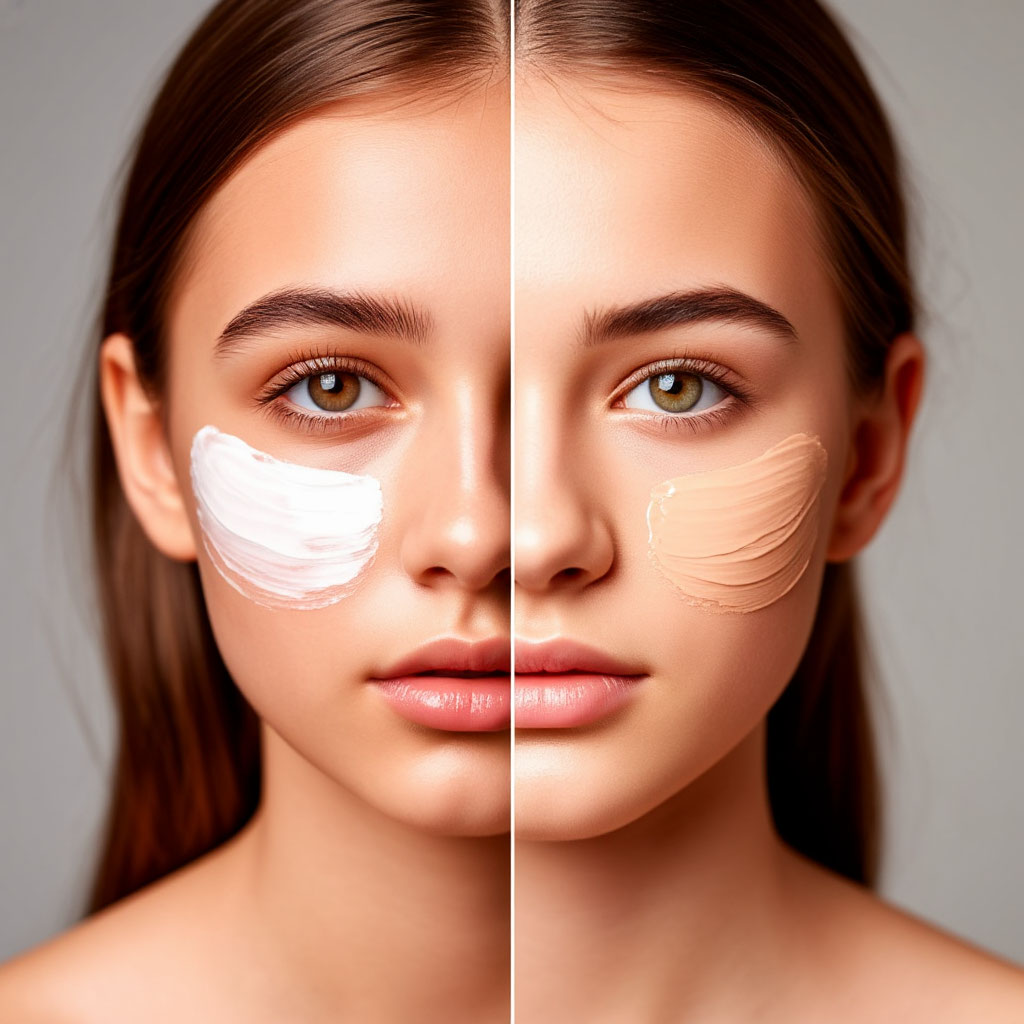
Which Is Better for Oily or Dry Skin?
BB or CC cream choice depends mostly on your skin type.
Oily Skin: Less Shine, More Balance
If your skin gets shiny fast, CC might be your best bet. It absorbs better, feels lighter, and includes ingredients like zinc and salicylic acid. Some BB creams labeled for oily skin add hydration but control oil, too.
Dry Skin: Nourishment Comes First
CC creams may highlight flakes if they don’t include enough moisture. BB creams are often richer, with oils like jojoba or shea. These formulas work better for dry patches.
Combo Skin: Mix and Match
Use CC on oily areas like the T-zone and BB on drier spots like cheeks. This gives both balance and coverage without extra weight.
Sensitive Skin: Go Gentle
Skin prone to redness or irritation needs calming ingredients. BB creams with centella or allantoin soothe. CC creams with green pigments help cancel redness, but check labels for alcohol.
Climate Matters
Hot weather? Use CC with sweat-resistant formulas. Cold air? BB with richer oils helps fight tightness. Adjust seasonally.
Table: What Works Best for Your Skin Type
| Skin Type | Best BB Choice | Best CC Choice |
|---|---|---|
| Oily | Matte finish, zinc-rich formula | Lightweight with oil-control pigments |
| Dry | Creamy texture, oils added | Only if labeled as hydrating |
| Combo | Use both on different zones | Same as BB |
| Sensitive | Fragrance-free, calming extracts | Green tint, no alcohol |
| Seasonal Use | Winter: heavier BB | Summer: water-based CC |
While BB creams offer moisture and coverage, CC creams provide precision correction with a barely-there finish. Their pigments adjust tone invisibly, which is ideal if you prefer skin to look fresh instead of fully made up. They’re especially helpful when you want to look awake and polished without putting on a full face of makeup.
Try applying both options on a calm day at home. Watch how your skin reacts after a few hours. That test will give you a clear winner. It’s simple but way more useful than guessing from the packaging.
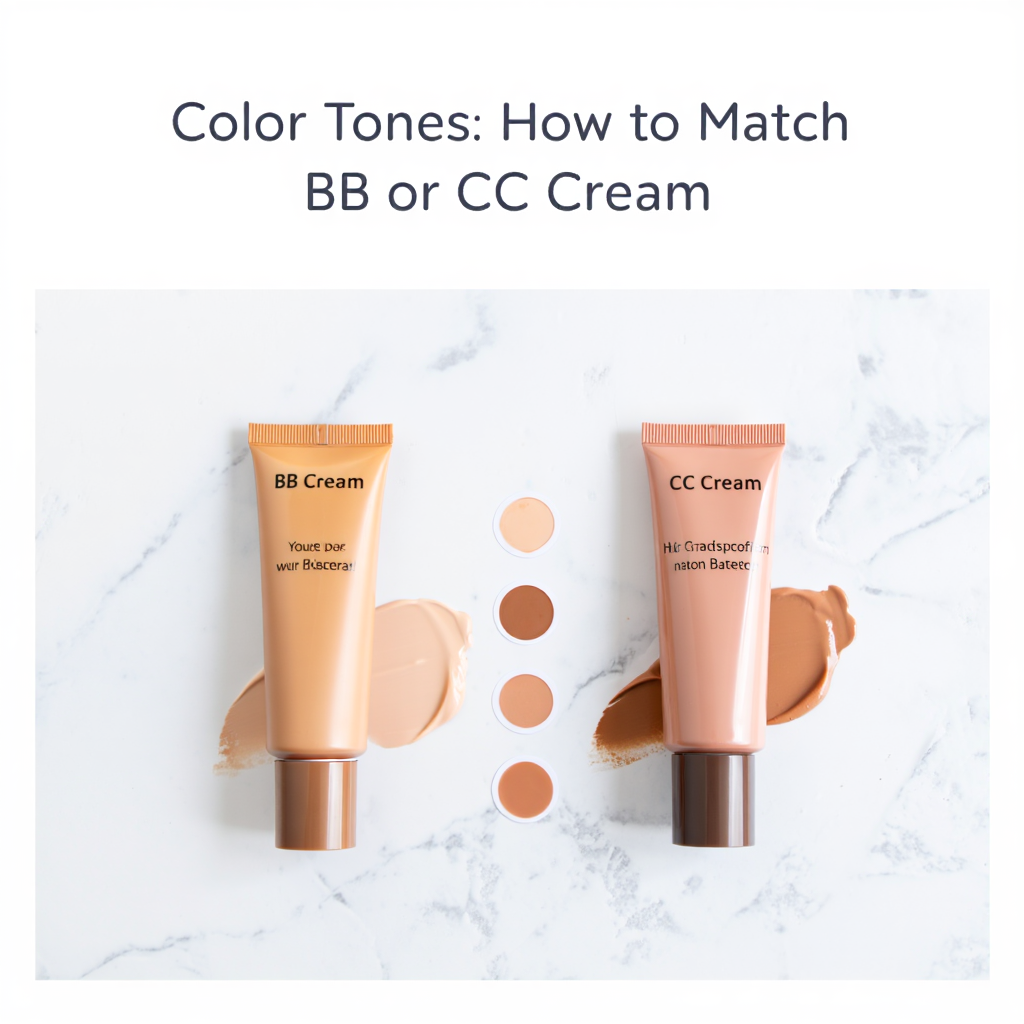
Color Tones: How to Match BB or CC Cream
BB or CC cream has to blend into your skin, not sit on top. They tackle tone in different ways.
BB Cream: Match It Right
BB creams use pigment to give soft tint. Many people pick too light a shade and end up looking ghostly. Try it on your jawline, then wait 20 minutes to see if it oxidizes. The best ones adjust to your skin tone, but it still needs testing.
CC Cream: Neutralize Smart
CC creams cancel flaws with color balance:
- Green tones cool down redness.
- Lavender tones brighten sallow areas.
- Peach tones boost dull skin.
- Pink tones add glow.
These pigments melt into your tone for a barely-there effect.
After choosing the right tone, make sure to test the cream during the day under different lighting conditions. That extra step helps you avoid mismatched results.
Different Skin Tones, Different Needs
Light skin pairs well with pink-toned BBs or blue-tinted CCs. Deeper tones look better with golden BBs or warm CC shades. Choosing based on undertone gives a more natural look.
Keep Seasons in Mind
In summer, your skin might tan slightly. Choose deeper tones with pigment protection. In winter, lighter shades with more moisture help keep that “lit-from-within” look.
Common Shade Mistakes
Using CC cream like full foundation never looks right. Picking BB cream without matching undertone also leads to mismatch. Many skip tone testing and use thick layers instead of blending. That kills the lightweight effect.
A Handy Trick
No tester on hand? Try applying the product on the back of your hand and blend it out smoothly. If it disappears and matches your natural skin tone, it’s likely a good fit for your face as well. This method is especially useful when shopping online where you can’t try products in person. Remember to check the color in natural light to be sure it looks seamless. It’s a quick and easy way to avoid mismatches and feel confident in your purchase.
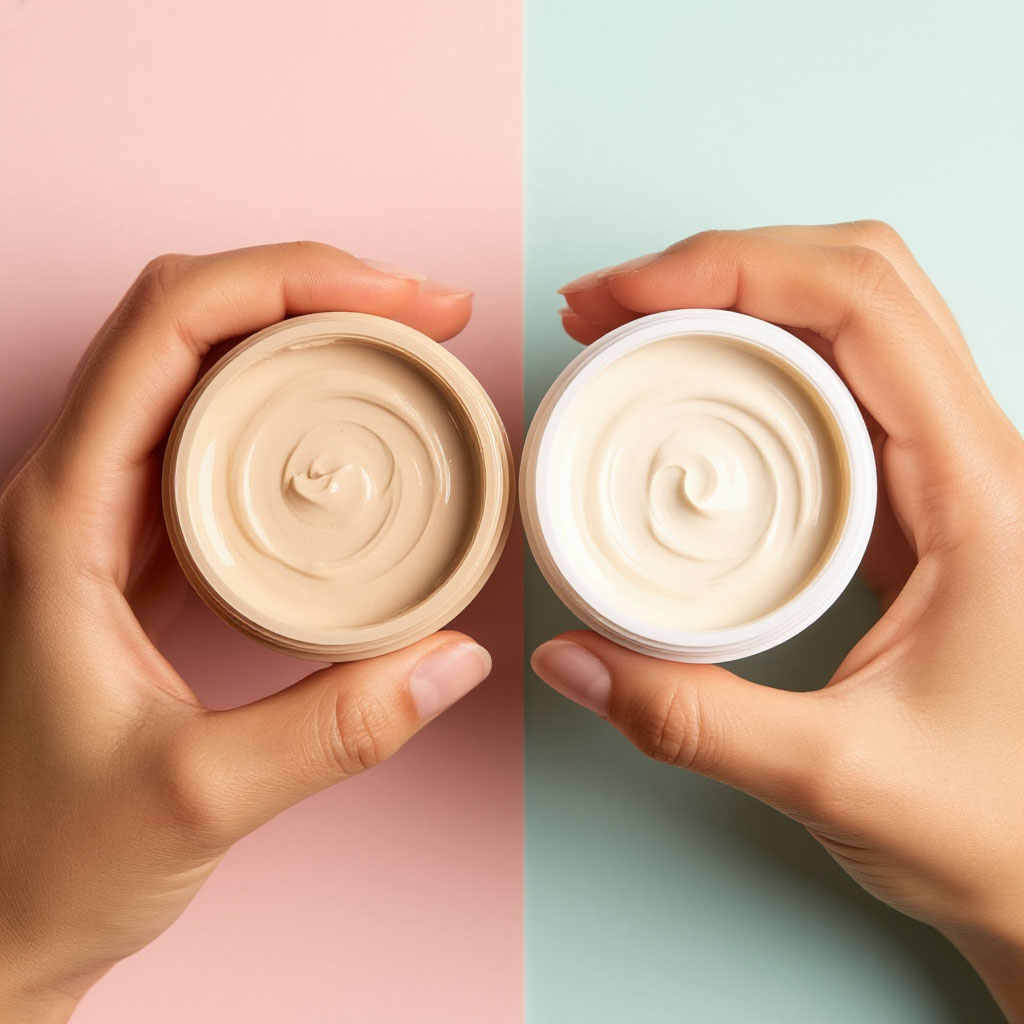
Application Tips: Get the Most From BB or CC Cream
Even the best BB or CC cream won’t help if applied wrong. Start with clean skin and a moisturizer that suits your skin type. Let that sink in fully before adding anything else.
Which Tool to Use?
For BB cream, fingers work well since body heat helps blend thick textures. CC cream, being thinner, goes on best with a damp sponge or soft brush.
Where to Start?
Begin in the center of the face and blend outward. That gives more coverage where it’s needed (T-zone), and a soft edge around the jaw and hairline.
How Much to Use?
Less is better. Start with a thin layer and add more only where needed. Wait a couple minutes between layers for better results.
Should You Set It?
Oily skin might need some powder in the T-zone. BB creams usually don’t need setting. CC creams often stay put without help.
Midday Touch-Ups
Use portable sticks or cushion versions of BB or CC creams for small fixes during the day. These formats are convenient to carry around and allow you to refresh your look without needing a full redo. Simply dab a little product on problem areas, blend it softly, and you’re good to go again. Always blot excess oil with a tissue first to keep makeup from sliding or looking cakey. This approach helps maintain a fresh and polished appearance no matter where you are.
After touch-ups, it helps to mist your face lightly with a setting spray. That brings back a natural finish and prevents buildup.
Summer vs. Winter Application
Use less in summer and aim for light coverage. In winter, you can mix BB cream with a drop of facial oil to stay hydrated.
Cleaning Up
Take BB or CC cream off thoroughly. First, use micellar water or cleansing oil. Then, follow with a gentle cleanser. That keeps pores clear and skin healthy.
BB and CC creams aren’t just trends. They’re flexible tools that serve different needs. BB cream gives care and color in one step. CC cream tackles uneven tone and brightens. Don’t rely on someone else’s favorite. Choose based on what your skin needs. The best results come from using the right cream, in the right way, for your unique skin.
Choose the texture that suits your skin day: CC for targeted tone-correction, BB for comfortable everyday coverage.
Download the brochure (PDF): Beauty Club — BB vs CC Cream: How to Choose

